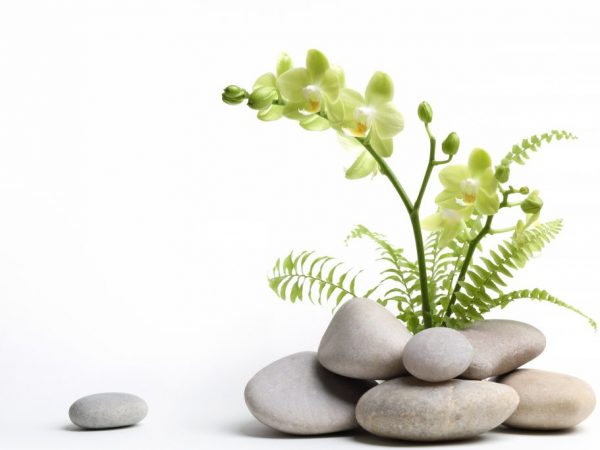Features of the orchid and fern
In recent years, more and more flower lovers are cultivating a variety of orchid varieties, and the fern, formerly the most popular indoor plant, is losing its leading position.

Features of the orchid and fern
External differences between orchids and ferns
Currently, there are more than 40 thousand species of orchid species and more than 20 thousand ferns.
The fern consists of a root and leaves similar to ostrich feathers. Orchid varieties have regular and airy roots, on top of which there is a spongy tissue of dead, air-filled cells. They absorb moisture from the air and soil. Fern-like food and water are obtained only from the ground.
In addition to the deciduous and root parts, orchids have flowers. All varieties have an alternation of 3 petal sepals with 3 petals. The middle part of the petals is called the lip. It is large in size and has a 3-blade notch. The flowers have stamens, a pistil, and a stigma containing small seeds.
An orchid is similar to a fern not visually, but in properties. The stems and roots are capable of storing water and nutrients, thanks to which these flowers can withstand prolonged drought.
Influence of lighting
Orchid is a light-loving culture. It grows well in a lot of sunlight. In a darkened room, orchids grow poorly, and flowers do not appear on them at all. Only in the spring is the flower slightly shaded so as not to damage the delicate leaves with an excessive amount of sunlight.
Unlike orchids, ferns do not tolerate much light. It grows and develops well in shady areas.
Exposure to moisture
The flowers are provided with sufficient moisture for good growth. It is not necessary to water the plants too much: an excess of moisture leads to rotting of the root, as a result of which the whole flower perishes.
To provide moisture to orchid and fern-like varieties, they are sprayed with water. At the same time, they take a liquid of the optimal temperature: cold water provokes the development of crop diseases.
Optimum temperature

Different temperature conditions are acceptable for plants.
It is better to keep the orchid in a backlit greenhouse, regularly spraying in the summer 2-3 times a day, in winter - only on sunny days or at elevated temperatures. In winter, the temperature is reduced by only 3 ° C-4 ° C compared to summer. An excessively low regime leads to the death of the plant.
The fern is unpretentious. It grows well at low temperatures.
Fern and Orchid Care Secrets
Flower lovers should be careful about the volume of the container for planting orchids. If the flower pot is small, the culture is transplanted into another.
Orchid transplant rules:
- the ground is watered;
- carefully remove the root part of the flower from a small pot;
- carefully examine the culture for rot, diseases;
- a sufficient amount of substrate is poured into another container in the form of crushed fern roots, pine and spruce bark;
- an orchid variety is planted.
After transplanting, the plant is protected from excessive sunlight, and the roots are protected from cold watering. Failure to comply with the rules leads to the development of diseases, as a result of which the orchid culture dies.
Fern-like varieties are unpretentious. They do not require special care and grow well on any land.
Summarizing
Orchid and fern-like varieties can decorate any home. Even in the absence of sufficient knowledge of the care of crops, anyone can get beautiful flowers that are pleasing to the eye.
If orchids require good lighting, then ferns grow well in the shade, while the latter require almost no maintenance, they have enough watering every 5-6 days.


